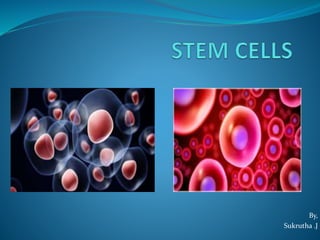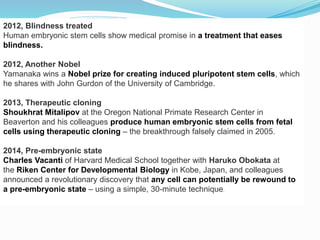Stem cells are undifferentiated cells that can differentiate into other cell types and divide to produce more stem cells. They are found in multicellular organisms and have two key properties - self-renewal and potency. There are several sources of stem cells including embryonic stem cells derived from embryos, adult stem cells found in adult tissues, and induced pluripotent stem cells produced by reprogramming adult cells. Stem cells offer promise for regenerative medicine but also raise ethical issues when derived from human embryos.
































